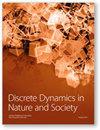逆向物流实施方案:区间2型FAHP-FTOPSIS方法
IF 1.2
4区 数学
Q3 MATHEMATICS, INTERDISCIPLINARY APPLICATIONS
引用次数: 0
摘要
近年来,随着环境问题、企业社会责任和可持续竞争的日益增加,逆向物流(RL)作为一个重要问题已经浮出水面。今天,强化学习被认为是一种战略活动。法律要求、社会责任、环境问题、经济利益和客户意识促使制造商生产环保产品,并收集退货和使用过的产品。然而,在组织中实施RL存在障碍。这项研究旨在优先考虑克服在伊朗钢铁工业中实施RL的障碍的解决办法。采用区间2型模糊层次分析法(FAHP)和模糊TOPSIS法(FTOPSIS)对数据进行分析。结果显示,“政策问题”、“知识问题”和“经济问题”分别是主要障碍,排名最高。此外,“与逆向链伙伴的战略合作”、“采用先进的废物收集技术”和“透明的质量和产品价值”是克服障碍的主要措施。提出的模型表明,决策者应该考虑与组织中的供应链合作伙伴的长期关系来实施RL。本文章由计算机程序翻译,如有差异,请以英文原文为准。
Reverse Logistics Implementations Solutions: Interval Type 2 FAHP-FTOPSIS Approach
In recent years, reverse logistics (RL) has come to the fore as an important issue, given the increasing environmental concerns, corporate social responsibility, and sustainable competition. Today, RL is considered a strategic activity. Legal requirements, social responsibilities, environmental concerns, economic interests, and customer awareness have led manufacturers to produce eco-friendly products and to collect returned and used products. Nevertheless, there are barriers to the implementation of RL in organizations. This study sought to prioritize solutions for overcoming the barriers to the implementation of RL in the Iranian iron and steel industry. To analyze the data, interval type-2 fuzzy AHP (FAHP) and fuzzy TOPSIS (FTOPSIS) have been used. The results revealed that “policy-related issues,” “knowledge-related issues,” and “economic issues” were the key barriers and showed the highest ranks, respectively. Furthermore, the results indicated that “strategic collaboration with reverse chain partners,” “using advanced technologies for waste collection,” and “transparent quality and product value” were the major measures to overcome the barriers. The proposed model suggests that decision-makers should consider long-term relations with supply chain partners in organizations to implement RL.
求助全文
通过发布文献求助,成功后即可免费获取论文全文。
去求助
来源期刊

Discrete Dynamics in Nature and Society
综合性期刊-数学跨学科应用
CiteScore
3.00
自引率
0.00%
发文量
598
审稿时长
3 months
期刊介绍:
The main objective of Discrete Dynamics in Nature and Society is to foster links between basic and applied research relating to discrete dynamics of complex systems encountered in the natural and social sciences. The journal intends to stimulate publications directed to the analyses of computer generated solutions and chaotic in particular, correctness of numerical procedures, chaos synchronization and control, discrete optimization methods among other related topics. The journal provides a channel of communication between scientists and practitioners working in the field of complex systems analysis and will stimulate the development and use of discrete dynamical approach.
 求助内容:
求助内容: 应助结果提醒方式:
应助结果提醒方式:


